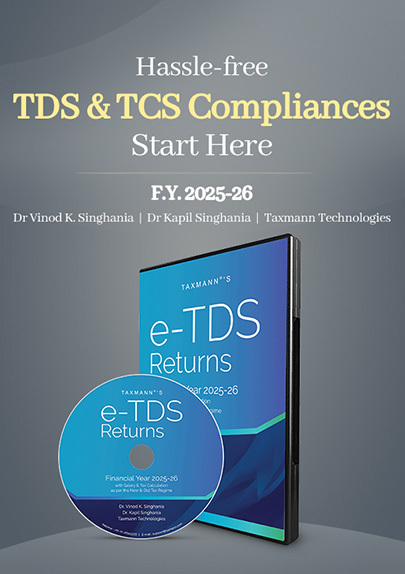CIT(A) Points for Determination – HC Restores Appeal
- Blog|News|Income Tax|
- 2 Min Read
- By Taxmann
- |
- Last Updated on 20 May, 2025

Case Details: Adim Jati Seva Sahkari Samiti Maryadit Korba Korba P.o. vs. Income-tax Officer-2 - [2025] 174 taxmann.com 336 (Chhattisgarh)
Judiciary and Counsel Details
- Sanjay K. Agrawal & Deepak Kumar Tiwari, JJ.
-
Shishir Dixit, Adv. for the Appellant.
-
Ajay Kumrani & Amit Chaudhari, Advs for the Respondent.
Facts of the Case
The Assessing Officer (AO) issued notice to the assessee under section 142(1)(i) requiring him to file a return of income within the due date prescribed in the notice. The assessee did not comply with the notice, which led to the passing of an assessment order.
Feeling aggrieved, the assessee preferred an appeal to CIT(A). However, despite notices, the assessee did not appear to support the appeal. The CIT(A) dismissed the appeal for non-appearance. ITAT upheld order of CIT(A). The matter reached before the Chhattisgarh High Court.
High Court Held
The High Court held that CIT(A) is obliged to make an inquiry before disposing of the appeal on its own. Further, the CIT(A) may direct the AO to make further inquiry and report the result of the same to the CIT(A).
By virtue of Section 250(6), the CIT(A) is obliged to state the points for determination, the decision therein, and also the reasons for the said decision while disposing of the appeal. The said provision is akin to Order 41, Rule 31 of the Civil Procedure Code, 1973, which requires courts to provide a detailed judgment outlining the points for determination to ensure clarity and transparency in proceedings.
The CIT(A) held that the assessee has not pursued the appeal despite being granted several opportunities, and he failed to substantiate the source of credit in his bank account either by oral or documentary evidence. However, the same was completely vitiated on account of non-compliance with Sections 250(4) and 250(6) of the Act.
Therefore, the matter was restored to the file of the CIT(A) for hearing and disposal afresh in accordance with the law after making an inquiry, as stipulated under Section 250(4) of the Act and also after formulating the points for determination as required under Section 250(6) of the Act.
List of Cases Reviewed
- Adim Jati Seva Sahkari Samiti Maryadit vs. Income-tax Officer [2024] 159 taxmann.com 8 (Raipur – Trib.)/[2023] 108 ITR(T) 645 (Raipur – Trib.) set aside
- CIT v. Ambala Flour Mills AIR 1972 SC 83 (para 8)
- CIT (Central) v. Premkumar Arjundas Luthra (HUF) [2016] 69 taxmann.com 407/240 Taxman 133 (Bombay) (para 9) – followed
List of Cases Referred to
- CIT v. Ambala Flour Mills AIR 1972 SC 83 (para 8)
- CIT (Central) v. Premkumar Arjundas Luthra (HUF) [2016] 69 taxmann.com 407/240 Taxman 133 (Bombay) (para 9).
Disclaimer: The content/information published on the website is only for general information of the user and shall not be construed as legal advice. While the Taxmann has exercised reasonable efforts to ensure the veracity of information/content published, Taxmann shall be under no liability in any manner whatsoever for incorrect information, if any.

Taxmann Publications has a dedicated in-house Research & Editorial Team. This team consists of a team of Chartered Accountants, Company Secretaries, and Lawyers. This team works under the guidance and supervision of editor-in-chief Mr Rakesh Bhargava.
The Research and Editorial Team is responsible for developing reliable and accurate content for the readers. The team follows the six-sigma approach to achieve the benchmark of zero error in its publications and research platforms. The team ensures that the following publication guidelines are thoroughly followed while developing the content:
- The statutory material is obtained only from the authorized and reliable sources
- All the latest developments in the judicial and legislative fields are covered
- Prepare the analytical write-ups on current, controversial, and important issues to help the readers to understand the concept and its implications
- Every content published by Taxmann is complete, accurate and lucid
- All evidence-based statements are supported with proper reference to Section, Circular No., Notification No. or citations
- The golden rules of grammar, style and consistency are thoroughly followed
- Font and size that’s easy to read and remain consistent across all imprint and digital publications are applied



 CA | CS | CMA
CA | CS | CMA
